Boston has long been one of my favorite cities, and one I have visited on many occasions. As we mourn the senseless loss of life from the recent Patriot’s Day terror bombings, and celebrate the heroism of the first responders in the face of adversity, we take this opportunity to remind ourselves what makes Boston so special to us.
My first visit to Boston was in 1967, when my uncle got married. My mother and I flew in for the wedding. I was only 13 years old, and when the others were off doing different things, I had a choice to either sit around in our motel room, or go ride the trolleys. Guess which choice I made.
I was just three years old when the last Chicago streetcars ran, so by 1967 they were a distant memory. I had caught fleeting glimpses of trolleys in Pittsburgh and Philadelphia while passing through on family vacations, but by 1967 the only place you could ride a trolley near the Chicago area was at the Illinois Railway Museum, and the tracks then were much shorter than they are today.
So, for me, Boston in 1967 was a revelation. I instantly fell in love with the PCCs and in the three days I was there, I made sure to ride all the lines, which at that time included Watertown, which was “temporarily” bustituted in 1969. As with nearly all the northside lines in Philadelphia, these substitutions became permanent, although the tracks and wire remained in place for years to allow access to the Watertown Yard.
Over the years, Chicago’s transit system took a different path from Boston’s, which in some ways represents “what might have been.” Chicago got rid of its extensive streetcar system in a relatively short period of time. But if Chicago had built an east-west streetcar subway, as it wanted to do for many years, things might have been different. Chicago’s system could have consolidated down to a half dozen trunk lines using PCCs, somewhat resembling Boston’s, but alas, it was not to be.
Boston and Chicago were alike in other ways. When I first went to Boston, they still had the old Orange Line elevated, which reminded me in many ways of Chicago’s “L”. Along with some friends, I made a special winter trip to say goodbye to the Orange Line el in 1987, just before service was switched over to the current alignment. The old Boston el has since been torn down.
There are some very picturesque locations on the Boston trolley lines, and some that are now considered forerunners of today’s “light rail.” The Riverside branch, opened in 1959, is one of these, but so is the Ashmont-Mattapan “high speed trolley,” which dates back to the late 1920s. For many years, ending about 1979, service on this shuttle line was provided by ex-Dallas double-end PCC cars, which quickly became some of my favorites. Fortunately some of these cars have been saved, and one may still eventually run once again in Dallas, on the McKinney Avenue heritage trolley line.
Chicago opted for greater standardization, while Boston has a lot of diversity in its equipment. Boston’s three rapid transit lines have different equipment that cannot be interchanged. While this makes things more complicated from an operational standpoint, it also makes things more interesting to the railfan. Boston was a pioneer in color-coding its lines, a practice that has been successfully copied here.
The Boston transit system has had its share of adversity. In 1952, it was possible to build a highly reliable PCC streetcar, but a lot more of a challenge in 1972. The resulting Boeing LRVs were plagued with problems in both Boston and San Francisco. Fortunately, the art of trolley building has made quite a comeback since then.
There is so much more history in Boston, in the cradle of liberty. Chicago hardly has anything that predates the 1871 fire, and certainly nothing dating back to the Revolutionary War. Boston has the oldest subway in the nation, opened in 1897. Our first one didn’t arrive until nearly 50 years later.
Today, while we soberly reflect on the victims of this cowardly act of terror, I am certain that the spirit of our freedom-loving people cannot be undermined by a few faceless, sadistic cowards. We send our thoughts, prayers, and support to the citizens of Boston, and look forward to a time when we will once again be with you in the city by the bay. Until then, we are with you in spirit.
-David Sadowski
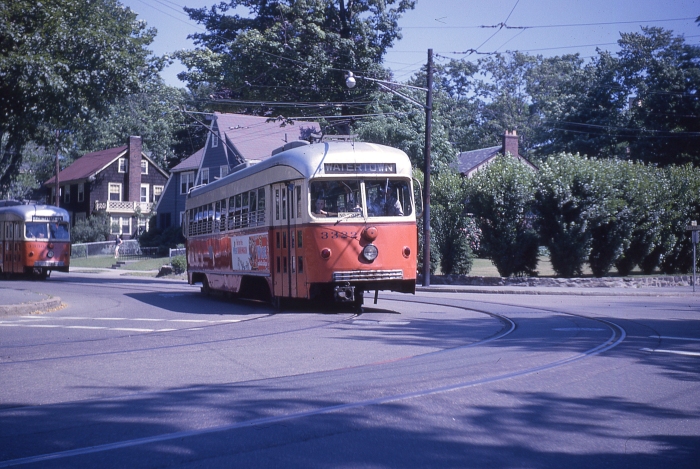
Double-end PCCs on the Watertown line in 1962. (Author’s collection)
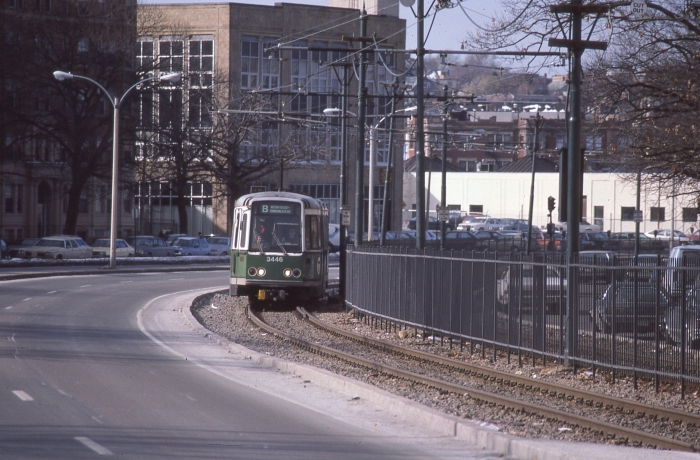
MBTA LRV 3446 on the Commonwealth Avenue line in the late 1980s. (Photo by David Sadowski)
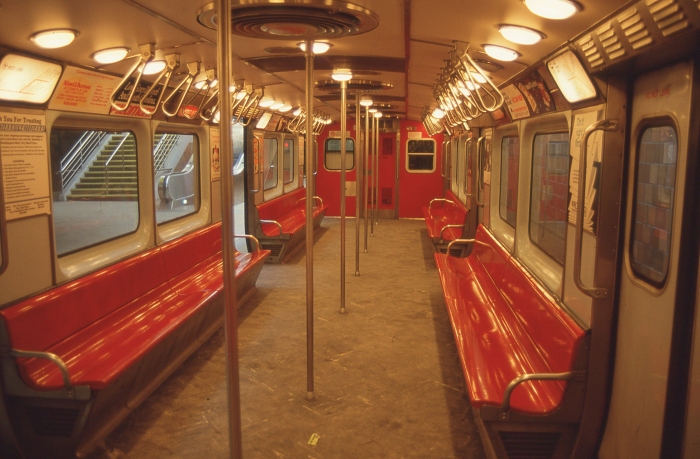
Interior of a Red Line train. (Photo by David Sadowski)

A Red Line train at Alewife. (Photo by David Sadowski)
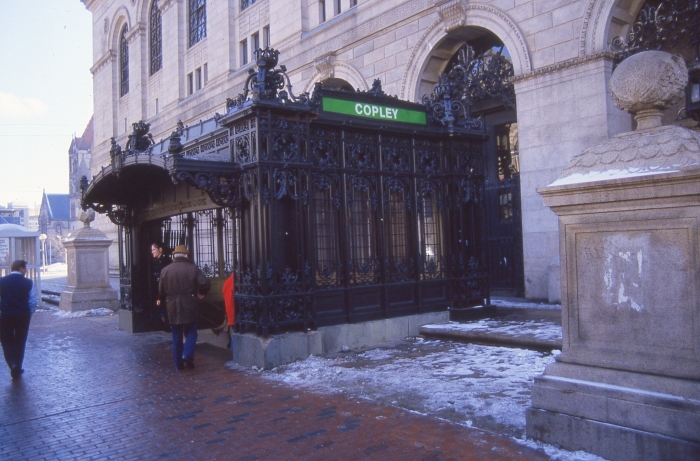
The very ornate Copley subway station entrance. (Photo by David Sadowski)
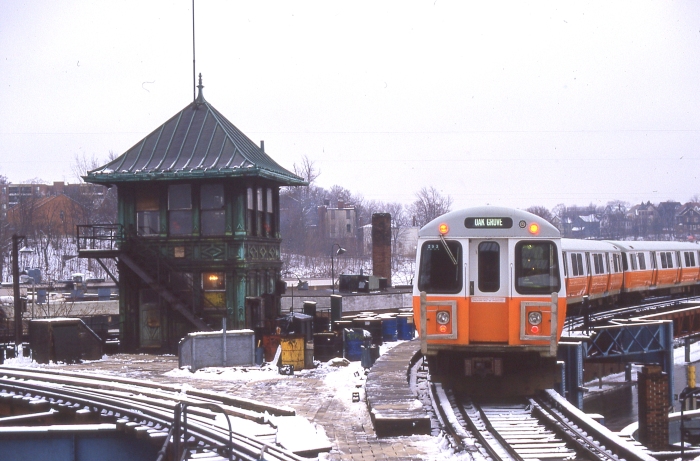
The old Orange Line el, shortly before it was discontinued in 1987. (Photo by David Sadowski)

MBTA LRV 3446 on the Commonwealth Avenue line in the 1980s. (Photo by David Sadowski)
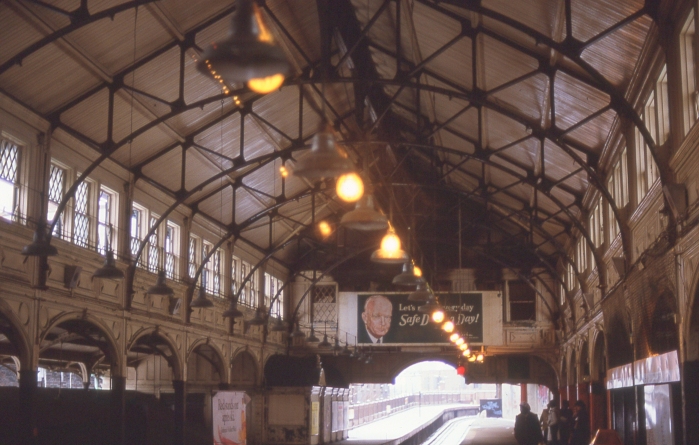
Interior of an Orange Line elevated station. (Photo by David Sadowski)
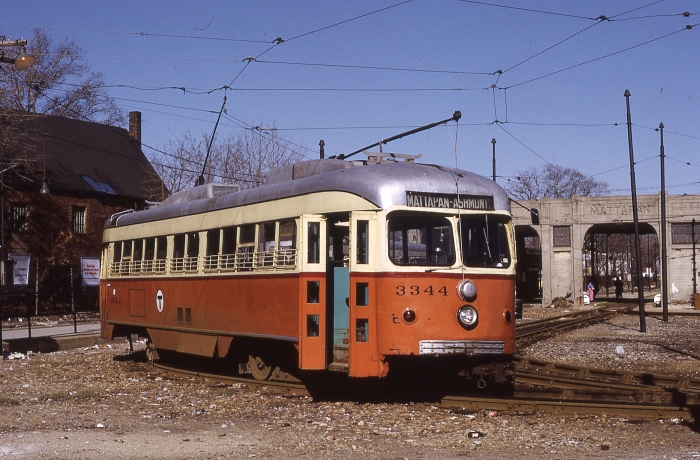
Double-end PCC car 3344 at Mattapan in the late 1960s. (Author’s collection)
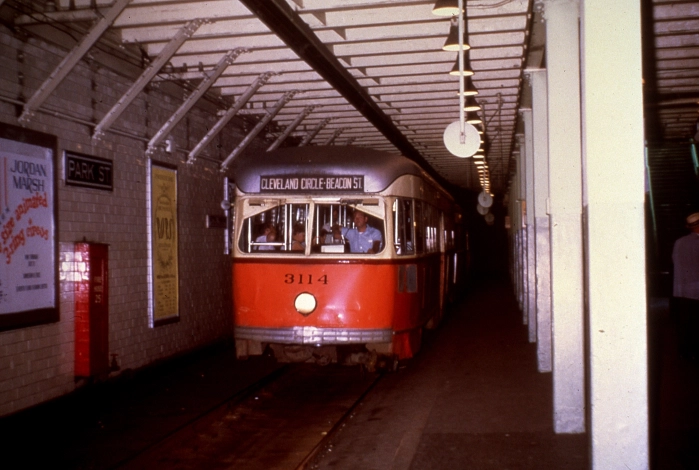
MBTA PCC 3114 in the subway in 1969. (Author’s collection)

Two “D” trains pass each other in the 1980s. (Photo by David Sadowski)
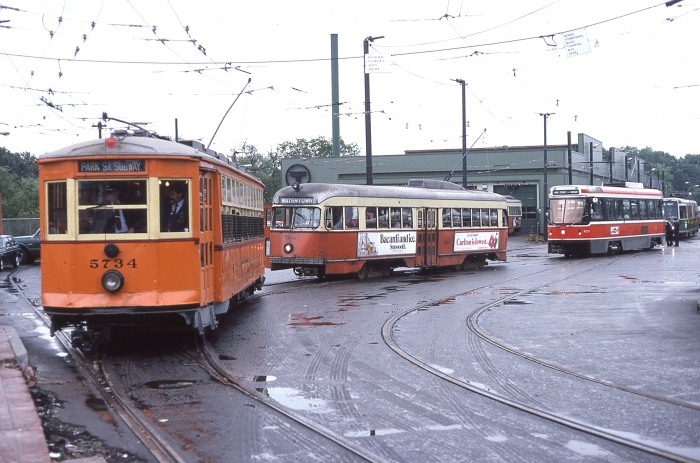
Four different types of streetcars in one picture: a “Type 5,” PCC, Toronto CLRV, and a Boeing LRV. (Author’s collection)

A two-car train of double-end PCCs on the Riverside line in 1959, soon after it opened. (Author’s collection)
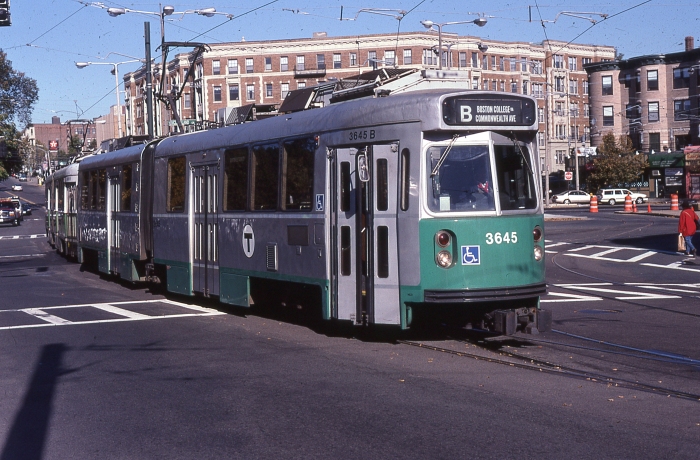
MBTA “Type 7″ car 3645 in the 1990s. (Author’s collection)
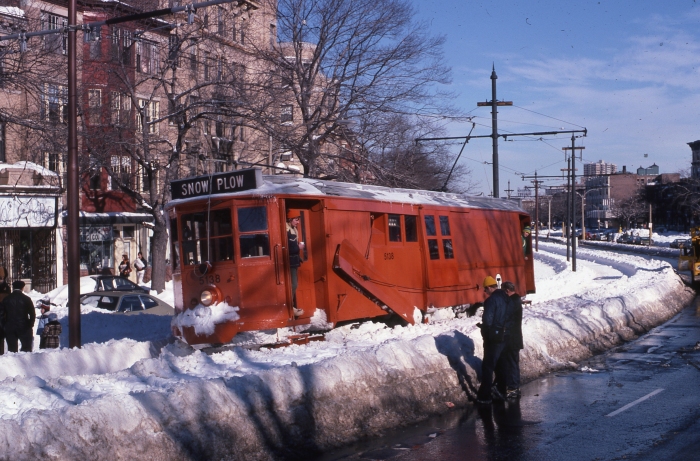
MBTA snow plow 5138 at work on January 22, 1978. (Author’s collection)
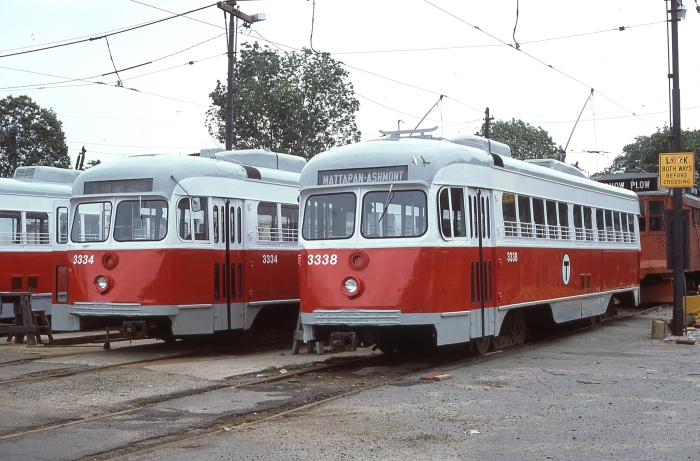
MBTA 3334 and 3338 at Mattapan in 1977. (Author’s collection)